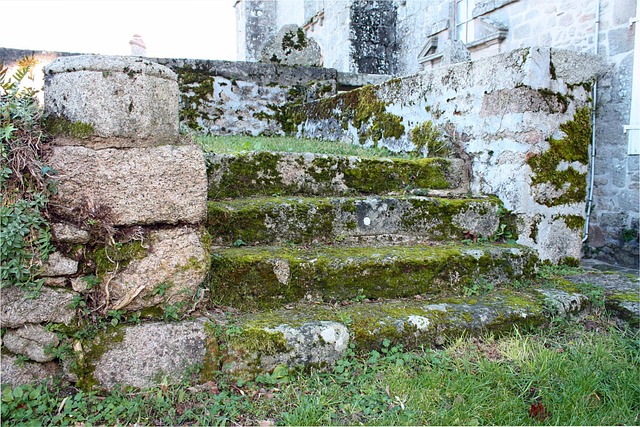The Step-by-Step Schema (HowTo schema) is a powerful tool for enhancing the display of instructional content in search results, making complex information easier to scan and engage with. By using structured JSON-LD format, web developers can organize tutorials, guides, and recipes into clear stages with text descriptions and visual elements, improving SEO rankings and user experience. This schema markup optimizes content for search engines by associating visuals with instructions, increasing click-through rates and reducing bounce rates. Effective implementation involves logical organization, clear language, relevant images, and contextual explanations of each step, while tools like Google Search Console help analyze user engagement to refine the schema strategy.
In today’s digital landscape, structured data markup is vital for optimizing online content. For step-by-step tutorials and instructions, the HowTo schema stands out as a powerful tool. This article guides you through the process of utilizing the HowTo schema to enhance search result displays with images and contextual instructions. From understanding the schema’s fundamentals to best practices for creating engaging tutorials, we’ll explore how this technique can boost visibility and user engagement, making your content a true ‘testament’ to expert knowledge.
- Understanding the HowTo Schema: A Comprehensive Guide
- Why Step-by-Step Content is Essential for Search Engine Optimization (SEO)
- Implementing HowTo Schema Markup: A Practical Approach
- Enhancing Display: Incorporating Images and Instructional Context
- Best Practices for Creating Effective Step-by-Step Tutorials
- Measuring Success: Analyzing the Impact of Schema Markup on Search Results
Understanding the HowTo Schema: A Comprehensive Guide

The HowTo schema is a powerful tool designed to enhance the display of step-by-step content in search results, providing users with a clearer and more engaging presentation of instructional materials. This schema specifically caters to content creators who want to showcase their expertise by offering a structured format for organizing and presenting complex information. By utilizing this schema, web developers and content writers can ensure that their tutorials, guides, and recipes are not only easily scannable but also visually appealing, ultimately leading to improved user engagement and click-through rates.
Understanding the HowTo schema involves grasping its key components, such as steps, ingredients (for recipes), and required tools or materials. Each step is represented with specific properties, including a text description and, optionally, an associated image or video. This visual element is crucial for capturing users’ attention and breaking down intricate processes into digestible chunks. The schema’s flexibility allows for its application across various types of instructional content, from cooking recipes to DIY projects and software tutorials, making it a versatile solution for content creators aiming to deliver rich results in search engine results pages (SERPs).
Why Step-by-Step Content is Essential for Search Engine Optimization (SEO)

In today’s digital landscape, where users increasingly rely on search engines to guide them through complex tasks, step-by-step content holds immense value for Search Engine Optimization (SEO). Providing clear, structured, and easily digestible instructions not only enhances user experience but also signals to search algorithms that a webpage offers valuable, actionable information. The Step-by-Step Schema plays a pivotal role in this context by enabling search engines to understand the hierarchical nature of instructional content, allowing for more accurate indexing and improved display in search results.
When implemented effectively using Tutorial Schema Markup or HowTo SEO Tagging, step-by-step content becomes a powerful tool to attract and engage users. By incorporating visual elements like images alongside textual instructions, web pages can create what’s known as Schema for Guides—a rich snippet that stands out in search results, enticing clicks with its enhanced visual appeal and contextual clarity. This strategic approach not only boosts visibility but also fosters higher user interaction and longer dwell times, ultimately contributing to better SEO rankings.
Implementing HowTo Schema Markup: A Practical Approach

Implementing HowTo Schema Markup: A Practical Approach
When it comes to structuring step-by-step content for optimal search engine visibility, adopting the HowTo schema markup is a game-changer. This powerful tool allows web developers and content creators to provide search engines with a clear understanding of their instructional material, resulting in enhanced display in search results. By marking up your content using the HowTo JSON-LD format, you can ensure that each step is accurately represented, complete with relevant images and contextual instructions.
A practical approach involves breaking down the process into manageable segments. Begin by identifying the key steps involved in your tutorial or how-to guide. Then, utilize specific properties within the schema to describe each stage, including the required tools, ingredients (if applicable), and detailed explanations. Incorporate images at each step to provide visual aids, enhancing user engagement and comprehension. With proper implementation of Tutorial Schema Markup, your content becomes not only more search-friendly but also offers a richer experience for readers.
Enhancing Display: Incorporating Images and Instructional Context

Incorporating visual elements and contextual cues is pivotal when utilizing the Step-by-Step Schema to optimize content for search engines. By integrating relevant images and instructional context, web pages become more visually appealing and informative, enhancing the user experience. This approach not only makes it easier for search algorithms to understand the content but also encourages users to engage with the material. When a rich result for a HowTo query appears in search results, featuring clear instructions accompanied by step-by-step images, it can significantly increase click-through rates and reduce bounce rates.
The Tutorial Schema Markup and HowTo JSON-LD structures play a pivotal role in achieving this enhancement. They provide structured data that enables search engines to index visual content and associate it with the corresponding instructional text. This synchronization ensures that when users interact with the rich result, they receive both textual guidance and visual representations, making the learning process more efficient and enjoyable. As a result, well-formatted and visually supported step-by-step content can elevate a website’s visibility and attract a larger audience interested in practical tutorials.
Best Practices for Creating Effective Step-by-Step Tutorials

When creating step-by-step tutorials, adhering to best practices ensures your content is not only informative but also optimized for search engines. Firstly, organize your steps logically and sequentially, with each step building upon the previous one. Use clear, concise language and avoid jargon to make your tutorial accessible to a wide audience. Incorporate relevant images at strategic points to enhance understanding and visual appeal.
Additionally, include contextual instructions that go beyond simply describing the actions. Explain why each step is important and how it contributes to the final outcome. This not only improves user experience but also signals to search engines the comprehensive nature of your content. Utilize proper HowTo schema markup, including relevant SEO tags like `HowToSEOTagging` and `RichResultForHowTo`, to help search engines understand and display your tutorial in enhanced, interactive formats.
Measuring Success: Analyzing the Impact of Schema Markup on Search Results

Measuring success when implementing schema markup for step-by-step content is crucial to understanding its impact on search results. By analyzing user engagement and behavior, you can gauge how effectively your structured data enhances visibility and click-through rates. Tools like Google Search Console provide insights into which rich results are triggering and how they perform. For instance, monitoring the performance of a “HowTo JSON-LD” schema can reveal increased interaction with your content, indicating that search engines are accurately interpreting and presenting your step-by-step instructions as rich results.
This data-driven approach allows you to refine your markup strategy over time. By observing which elements of your HowTo schema are most engaging—whether it’s the inclusion of images, detailed descriptions, or specific context—you can optimize your content for better search rankings. Ultimately, the goal is to create a “Rich Result for HowTo” that not only catches the eye of users in search but also provides them with the precise guidance they need, fostering higher satisfaction and longer dwell times.
